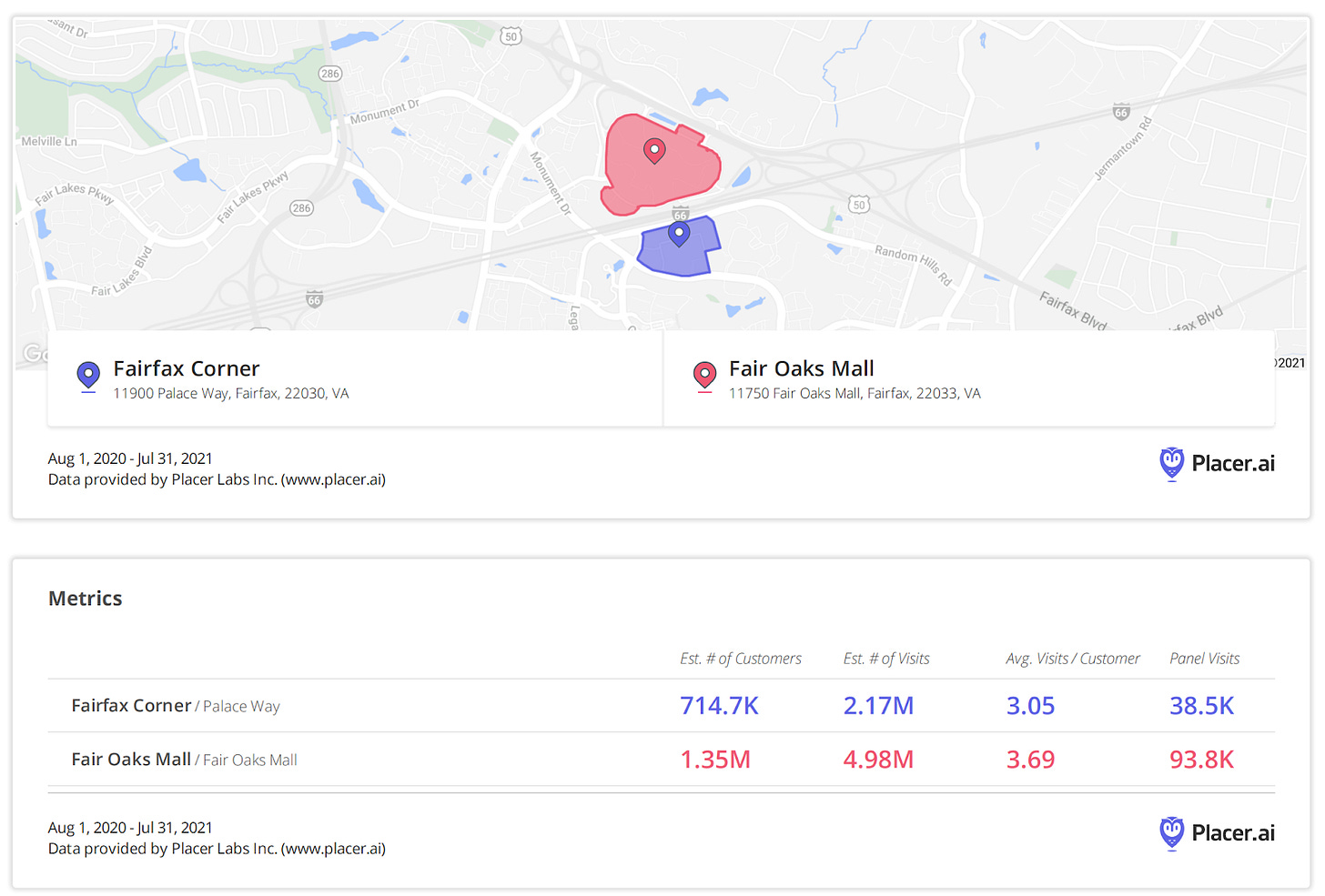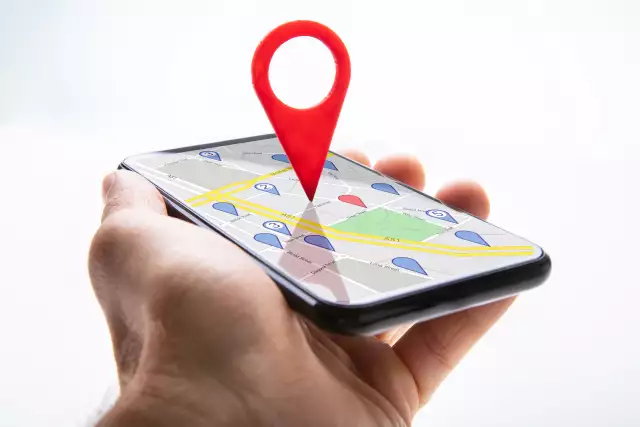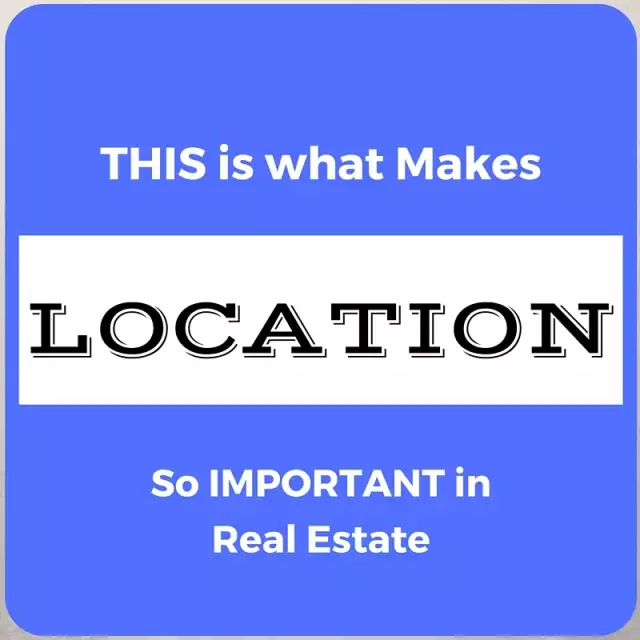Leveraging Location Intelligence to Inform your Real Estate Portfolio Decisions
Leveraging Location Intelligence to Inform your Real Estate Portfolio Decisions
My favorite part of writing this blog is getting the opportunity to meet really innovative leaders and learning about all of the exciting technology which is getting introduced across the different real estate sectors. Based on my experiences from current and former roles, the areas of the Real Estate industry that I know best are Commercial, Multifamily, and Residential. But, I have a strong curiosity to continuously learn about the other real estate asset types and to stay on top of the latest technology solutions that support them. I recently spoke with the executive team of a PropTech company in the location intelligence space that primarily serves the Retail sector, and I was blown away by their offering.
Location data is a topic that we hear more and more about. Whether it’s a solution launched by a new startup, or an existing player enhancing their offering through location services, there are a myriad of use-cases for this data. Little did I realize the innovative ways that companies were offering B2B solutions.
Placer
Placer, founded in 2016 and having raised $166M, provides traffic analysis for every property in the US. In other words, they can provide data on how many people pass by (or enter into) any location in the country, including the day of week and time. In order to obtain this data, Placer has built partnerships with popular App developers. The data that they receive is completely anonymized (and users need to opt-in), so they are reporting on where visits are being made on an aggregate basis, instead of activity of any specific person. In fact, they built their technology to never include the information of an individual user. Even though they do not receive location data from everyone in the country, they use a combination of algorithms and AI to fill in the gaps and provide what they say is the most accurate foot traffic reporting in the industry.
There are certain use-cases that are very straightforward. For example, a retail broker that is marketing a storefront can provide prospective tenants with accurate foot traffic analytics so that they can make an informed decision about whether or not the location will be ideal for their business. And even though that use-case in itself is incredibly valuable, it is just scratching the surface for what’s possible with the tools that they provide. Placer’s reporting isn’t restricted to just the number of people who walk by a vacant storefront each day. They can see where shoppers go after they leave a particular store, how far they are willing to travel from home when choosing a restaurant at which to eat, or how long of a commute to work people are willing to endure. With this information, millions of businesses can make important decisions which are informed by actual data.
Features & Use-Cases
Unlike most solutions that have a very specific purpose, companies are continuously coming up with innovative ways to leverage Placer’s platform to gain an edge over their competition. Below is a small sample of some of the features and use-cases that I found most intriguing.
Trade Areas
A Trade Area is a polygon which can be drawn on a map around any specific location which depicts where the people live that visit that location (it shows their general location, not the exact person nor their home address). In addition to providing insights for a retailer as to where their customers are coming from, they can also see where their competitors’ customers are coming from.

With this data, companies can make informed decisions as to where they should spend their marketing dollars. Instead of just advertising to an arbitrary radius around the location, they can target the specific towns where their customers are coming from, or even better, where their competitors' customers are coming from.
Another use-case for Trade Areas is planning future expansion or contraction of a retailer's physical footprint. One of the biggest fears that multi-unit operators have is cannibalization. They want to make sure that when they open up additional locations, they are servicing NET New customers, not just pulling the same customers that were already patronizing their other locations. In order to find the right location, they can draw trade areas around their existing locations along with trade areas around vacant storefronts. By layering in demographic data from 3rd party vendors through their marketplace, they can easily find similar markets to expand into that don’t cannibalize their existing customers from other locations. The same principle can be used if a company wants to consolidate locations. By drawing trade areas around all of their existing locations, they can identify overlapping trade areas, informing them of which location they can shutter without losing customers. This solution can be game changing for franchisors, restaurant owners, retailers, brokerage offices, hotels, car dealerships and just about any business that has more than one location.
Investors / Analysts / Retailers
When deciding which stocks to invest in, investors are always looking for an edge to see how a company is performing in advance of earning announcements. Insider trading laws require investors to rely solely on publicly available information, and Placer can play a huge role in this process. The platform provides data on how many visits are being made to any location, and compares this number to historical visits and that of its competitors. They publish data within 3 days which provides near real-time visibility. If an investor sees that visits to Walmart have increased 20% quarter over quarter, while visits to Target have only increased 6%, they can back into a general assumption about the revenue growth for each operator.
Target can then dig deeper into the analysis to determine if customers that visit both retailers typically stop in their store first, or if they more often go into Walmart first. They can also see how much time a customer spends in each store on average. If they see that shoppers come into their business first and spend an hour, and then go into Walmart afterwards and spend only 20 minutes there, they can make assumptions about what’s driving that customer behavior. Utilizing the example above, a conclusion could be made that consumers prefer to go into Target to get a feel for inventory options and pricing, but then head over to Walmart to make their purchases because their pricing is more competitive. Target can use this information to adjust pricing, store layouts, or other strategies to better capture their customers' spend before they leave.
Travel
Often it is the case that people that live in certain markets travel and vacation to similar destinations. For example, at a previous role that I had at a real estate brokerage servicing the northeastern US, we concluded that many people that lived in Fairfield County Connecticut traveled up to Stowe Vermont in the winter for ski trips. During the summer months, many of those same households traveled to specific towns on Cape Cod. Of the residents of this county that owned second homes, the destination that was most popular for them was Naples Florida. By understanding where their customers are most likely to come from, the travel industry can focus their marketing spend in these areas. The beneficiaries of this data include hotel owners, Airbnb hosts, real estate agents, travel agents, restaurant owners, and just about anyone who makes a living off of tourism. Going a step further, airlines can even optimize routes based on where they are seeing changing travel behavior.
Office / Hybrid Workforce
The pandemic has accelerated the biggest change to where/how people work in a generation. Now that many companies have either instituted a hybrid work strategy or are in the process of trying to figure one out, they are entering uncharted waters and they have many unanswered questions. How far are their employees willing to commute to work? How much permanent space or flex space do they need, and where should these sites be located? Where do their visitors/customers come from, and how far are they willing to travel? Additionally, flex space providers are trying to determine the best locations to open up new sites and how big these spaces need to be. Also, building owners are trying to assess how much risk they have regarding leases not being renewed due to their occupiers’ workforce not willing to travel. All of this information can be gleaned from Placer’s data by looking at the general areas where people that commute to an office are coming from, and how far people are willing to travel each day. It's not just the owners and occupiers that are affected by this changing behavior. It’s also the mass transit operators, the local restaurants that workers eat at, office supply vendors, construction companies, and more.
More and More Applications
The list of use-cases is nearly infinite. Consumer Packaged Goods companies (CPGs) can use this data to get a deeper understanding of the offline retail trends and better understand their customers’ journeys. Multifamily developers can gain insight to where there are the biggest needs for apartments. Local governments can understand migration trends, gain visibility into the COVID recovery to see if residents are returning to normal routines, and measure the success of initiatives (for example, did the new dog walk that they added to the local park drive more visitors). Placer has also built a 3rd party marketplace that allows data providers to overlay their data onto Placer’s platform to provide deeper insights for a variety of businesses and applications. And the more users that they gain on the platform, the more use-cases get discovered.
Privacy
As location based services continue to grow in popularity, so does the concern that consumers have about privacy. When I met with the team at Placer, privacy was the one topic that I focused most heavily on. Sure, the Placer platform provides unprecedented levels of value, but at what cost to society. When I brought up my concerns, it was clear to me from their answers that privacy was the number one most important priority to them. I can honestly say that I left the conversation feeling very satisfied with the way that they approach this important topic.
First, all of the data that they receive is completely anonymized. Any information that can identify a specific person is stripped away before the data ever reaches the Placer team. Secondly, all of their 3rd party App partners require their users to Opt-In to share any data. If a user isn’t interested in being included, they can easily opt-out any time. Placer’s business model has nothing to do with individual identities; they only focus on aggregated location data.
To further punctuate this point, the Placer team used an analogy on how the practice of anonymized data has become the norm in other fields. There is almost no data on the planet that is more sensitive and protected than health records. HIPAA provides broad protections for all individuals to ensure that their medical records remain completely confidential. Health care providers are not permitted to release patient records to others without the patient's authorization. Yet, positive COVID results (and other viruses and diseases) are reported publicly by each town, county, and state. Not only is this practice permitted, but it is generally accepted and even expected by the population. Just like medical records, as long as the data is anonymized and all personal identifiable information is completely removed, location data can be collected and reported on without violating anyone's privacy. Placer goes the extra step by requiring that all users opt-in before any of their data is included in their reporting. Placer is checking all of the boxes of protecting individual privacy and they take this responsibility extremely seriously. Placer continues to dedicate significant resources to ensure that they are doing everything possible to protect individual privacy.
SubscribeShare








